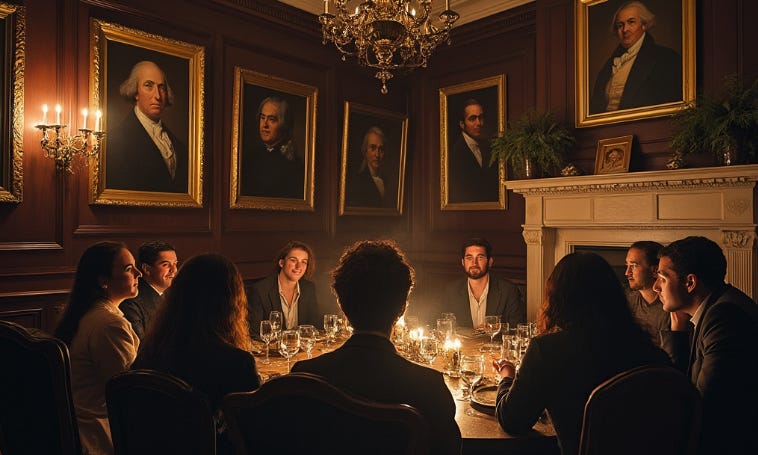Harvard Crimson Urges Campus Conservatives to Come Out of Hiding
The episode highlights the prevailing mindset, and monoculture, at the school
“Come out, come out, wherever you are,” cried one recent editorial in The Harvard Crimson, as the student newspaper chided the school’s non-liberals for allegedly cloistering themselves away in cliquish social clubs.
The reluctance of conservative students to wear it on their sleeves isn’t just antisocial and elitist, argues The Crimson. It also stunts their “intellectual rigor,” since nothing lends itself to intellectual rigor like being shouted down by an angry mob of your peers.
Here’s how The Crimson framed it all up:
A conservative intellectual revival is quietly brewing at Harvard.
It’s not unfolding in classrooms or lecture halls, or the Harvard Republican Club, or the Institute of Politics’ Conservative Coalition. Instead, it’s happening mostly out of view, in spaces replete with antique pseudonyms, formal dress, and — supposedly — extreme intellectual rigor.
Within these spaces — the John Adams Society, the Abigail Adams Institute, and The Salient — a group of classics-oriented conservatives are attempting to revive the Western canon and inject contemporary conservatism with intellectual substance.
But there was more disingenuousness to come:
The problem is not the existence of conservative thought on our campus, nor the sense of community the spaces offer. There’s nothing wrong with tweed jackets, crackling fire, and spirited debates.
Rather, the issue is the insularity. Conservatism, like any ideology, grows dull the less it is challenged. The Faculty of Arts and Sciences should seek to cultivate spaces that instead invite conservative students to engage openly with those who disagree. Likewise, conservative students in these organizations should step out of the shadows and into the broader intellectual life of the University.
Conversations about the enduring insights of great thinkers aren’t just vital for conservatives — they’re vital for all of us. It’s high time we have them together.
Was this a sincere invitation to a genuine meeting of the minds at Harvard?
Are campus progressives really ready to treat non-progressive ideas and individuals respectfully, by engaging with them in open, civil, and constructive discourse?
Does The Crimson sincerely care if conservative arguments and ideas “grow dull” through disuse at Harvard?
The snark and sarcasm that drip from the editorial indicates otherwise. It read more like a taunt than an olive branch. And it didn’t go unanswered.
One self-identified conservative, John Adams Society Chair Leo A. Koerner, published a rejoinder in the Crimson letters section that would have made Adams proud.
Koerner’s letter read as follows:
I am glad to see this newspaper take a renewed interest in the lives of Harvard conservatives. There is, in fact, a “conservative intellectual revival” happening here; thank you for noticing.
Nevertheless, a recent Crimson editorial unfairly critiques conservative students, demanding they come out of “hiding.”
Over the past eight years conservatives at Harvard have been tolerated only insofar as they participate in “bipartisanship” — a warped misnomer when only one set of ideas is socially acceptable. The president of the Institute of Politics’ Student Advisory Committee even explicitly rejected Republican inclusion at the IOP in an op-ed advocating an end to the institution’s nonpartisan stance. There are virtually no openly conservative professors left at this University. The message is clear: Harvard has no interest in us.
It became necessary to build new institutions where we could explore ideas freely; new institutions where we could host guests with whom we genuinely want to engage — not those whom the campus deems safe enough. So we did — both on and off campus.
We built them without your help, without the IOP’s help, without Harvard’s help. We are happy that all of a sudden you have decided that our movement is important — but you do not get to make demands. Our goal has always been to get the education we deserve.
Until the administration finally commits itself to delivering that education, we will continue to pursue it ourselves, without regard for the Editorial Board’s opinions.
This exchange doesn’t suggest that a rapprochement between right and left will be happening anytime soon at Harvard. But who knows? Even this back and forth, as testy as it seemed, potentially opens the door to more dialogue, which can in time ease the ideological distrust, misunderstanding, and fear that grips the school.
It’s a start, in other words. And a start is better than the status quo, in which one ideology is so dominant that students with other views feel compelled to self-segregate in secretive social clubs.



